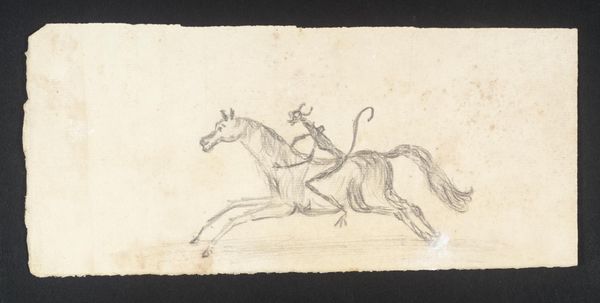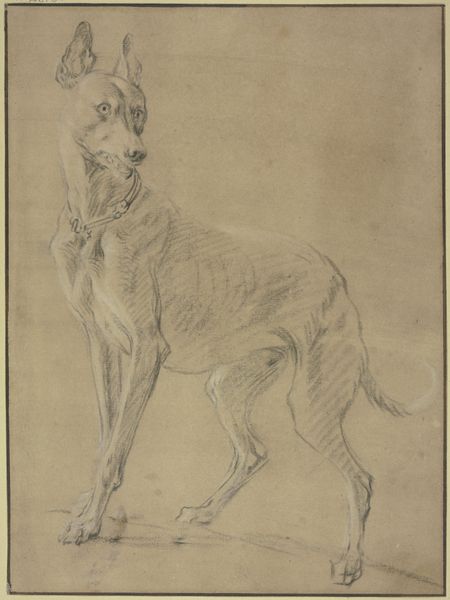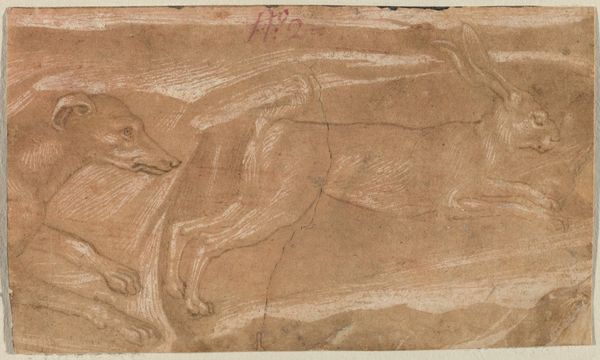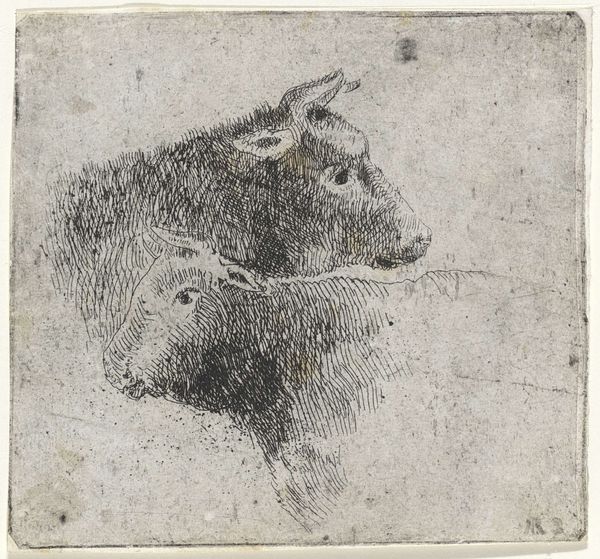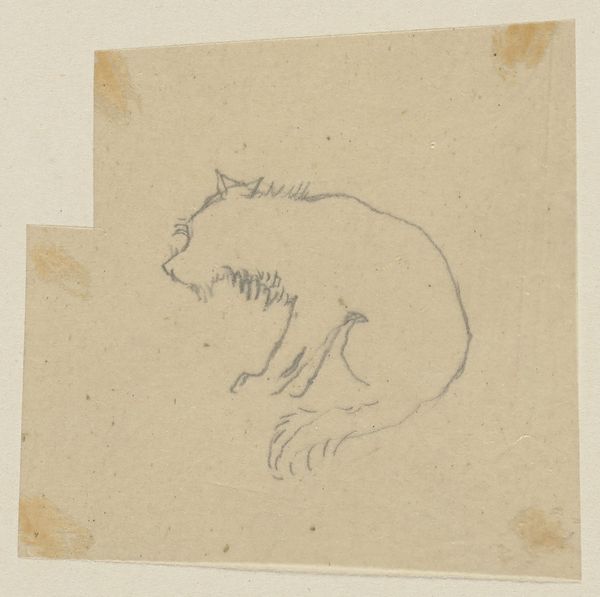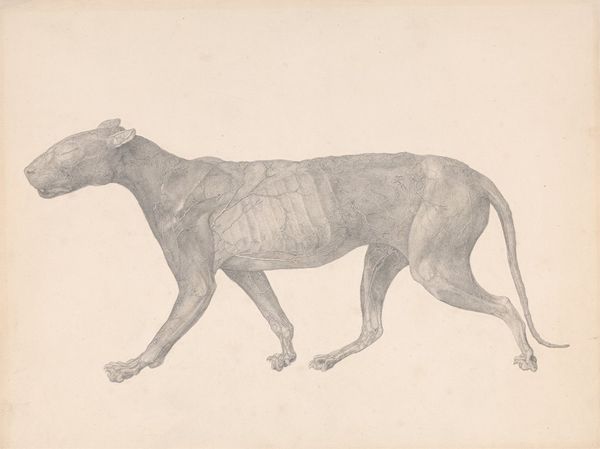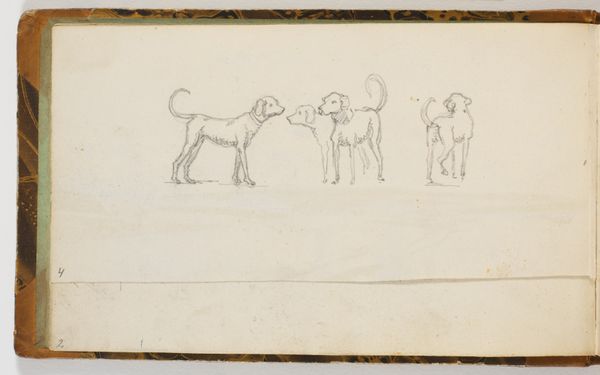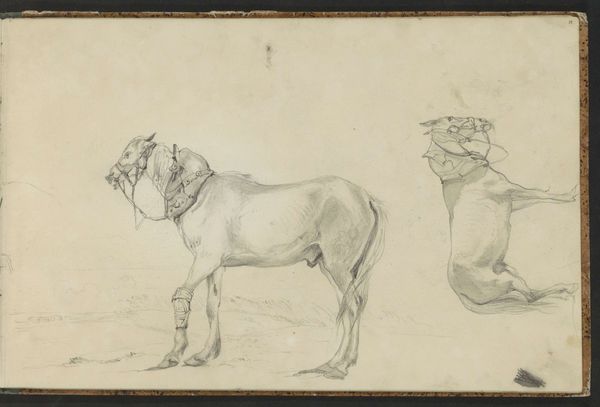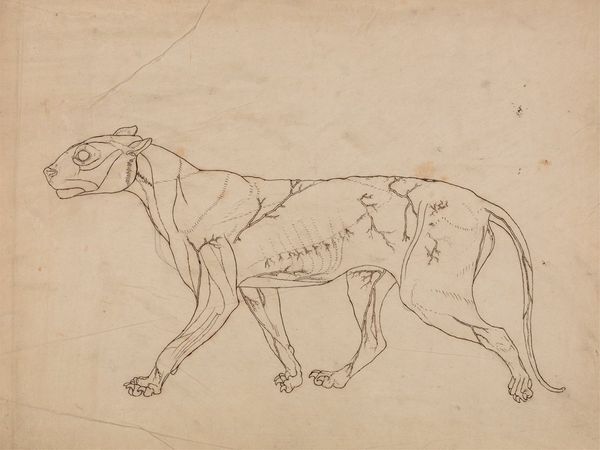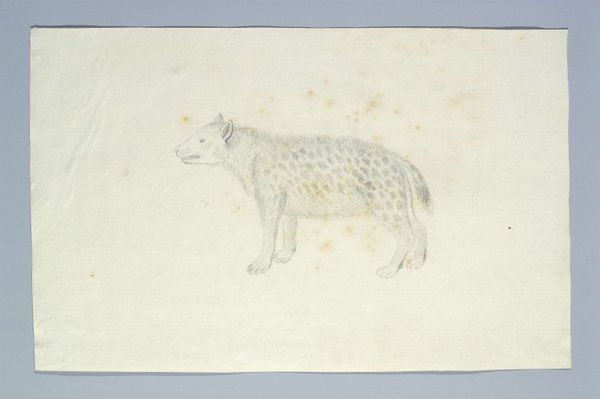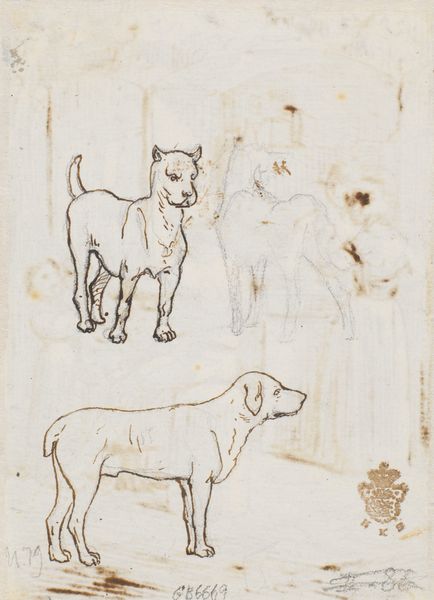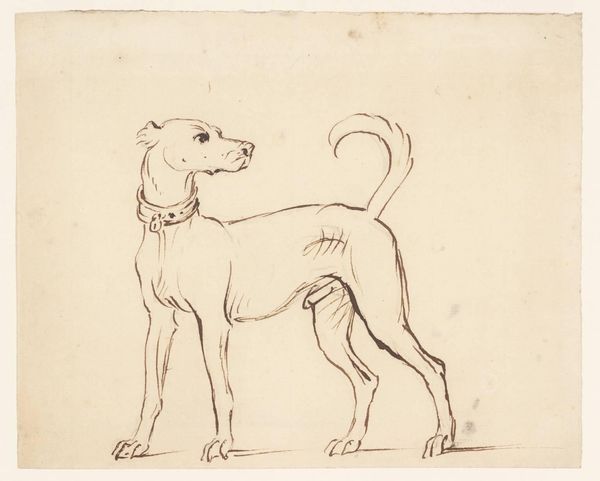
drawing, pencil
#
drawing
#
animal
#
dutch-golden-age
#
pencil sketch
#
dog
#
pencil
#
genre-painting
#
realism
Dimensions: height 151 mm, width 159 mm
Copyright: Rijks Museum: Open Domain
Editor: So, here we have "Study Sheet of a Running Dog" by Gerard ter Borch, made with pencil sometime before 1662. It's just a small drawing, and my first impression is how simple and quick it feels, like the artist was just trying to capture a fleeting moment. What stands out to you in this piece? Curator: What interests me is the immediacy and utility of this work. It's a study, an exploration of form and movement through readily available materials - paper and pencil. It speaks to the daily practice and labour of the artist. Consider the accessibility of these materials in the 17th century – who had access and what does that say about artistic production? Editor: That’s interesting, I hadn’t thought about access to materials. So, you’re saying the choice of pencil and paper, even the sketch-like quality, highlights something about the social and economic context? Curator: Precisely. It shifts the focus from the grand narrative or idealized subject to the nuts and bolts of art making. Furthermore, observe the 'waste' - the imperfections in the paper, the smudges. This is the evidence of labor, usually concealed in finished artworks. This 'waste' can be just as revealing as the final form. Editor: So, rather than seeing a quick sketch, we can see a glimpse into the artist's process and even broader questions about art production and its social implications at the time. Curator: Exactly! It’s about appreciating the labour and materiality inherent in art, even in something seemingly simple. The "how" becomes as important as the "what." Editor: I've never really thought about it that way, but it makes me appreciate the work and its historical context a lot more. Thanks! Curator: My pleasure, these details allow a broader understanding of Dutch Golden Age art as an industry.
Comments
No comments
Be the first to comment and join the conversation on the ultimate creative platform.

